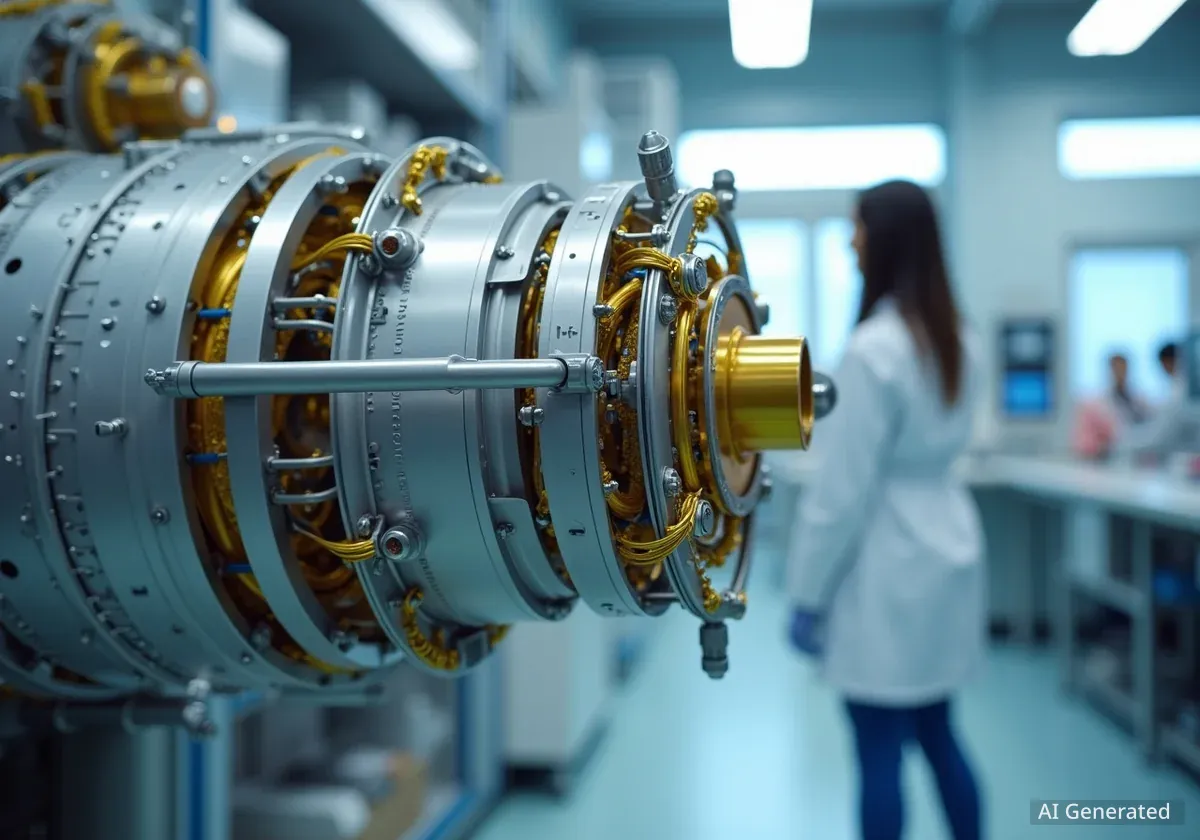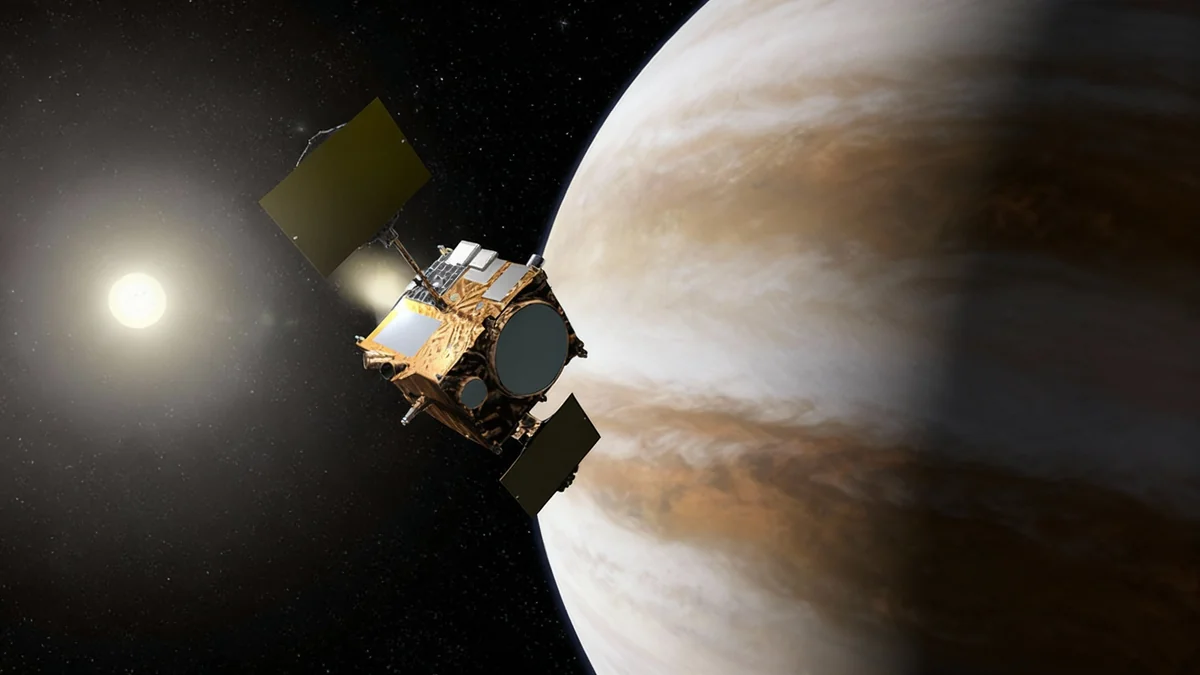Technology firm ABB has secured a contract with the Canadian Space Agency to develop a new high-tech instrument aimed at improving global climate monitoring. The project, part of a Canadian-led space mission, will focus on understanding one of the most significant uncertainties in current climate models.
The instrument, named TICFIRE, will be an advanced infrared imager designed to study thin ice clouds in the upper atmosphere. This work will be conducted at ABB's specialized facility in Quebec City, which houses a dedicated team of space technology engineers.
Key Takeaways
- ABB has been awarded a contract by the Canadian Space Agency for the conceptual development of the TICFIRE instrument.
- TICFIRE is a key component of the Canadian-led HAWC satellite mission, which focuses on climate science.
- The instrument will measure how thin ice clouds and water vapor affect Earth's energy balance, a major uncertainty in climate modeling.
- The mission aims to improve severe weather forecasting, air quality assessment, and disaster tracking, with a planned launch around 2031.
A New Eye on the Upper Atmosphere
The Canadian Space Agency has tasked ABB with the initial development phase for the Thin Ice Clouds and Far InfraRed Emissions (TICFIRE) instrument. This sensor is a central part of the broader High-altitude Aerosols, Water Vapour and Clouds (HAWC) satellite mission.
The primary goal of HAWC is to gather critical data on Earth's atmosphere. Scientists expect this information will significantly enhance the accuracy of climate models and improve predictions for severe weather events. The data will also support air quality monitoring and the tracking of natural disasters like wildfires and volcanic eruptions.
What is the HAWC Mission?
HAWC is a Canadian-led satellite initiative designed to provide detailed observations of atmospheric components. It is slated to contribute to the international Atmosphere Observing System (AOS), a larger mission concept led by NASA. The HAWC satellite is planned for a 2031 launch and will follow an orbit that maximizes its observation time over the Arctic region.
Tackling Climate Model Uncertainty
One of the biggest challenges in climate science is understanding the precise role of clouds. Thin ice clouds, found high in the atmosphere, create a complex effect. They both block incoming solar radiation and trap heat attempting to escape from Earth's surface.
The TICFIRE instrument is being engineered to measure this dual effect with unprecedented detail. By using a novel infrared spectral imager, it will observe how cold water vapor and its ice cloud form interact with energy. This type of measurement is only possible from space, looking down through the atmosphere.
"We are proud to be a part of this important scientific mission that will advance our understanding of the Earth’s climate," said Marc Corriveau, General Manager for ABB’s Measurement & Analytics division in Canada. "ABB’s purpose is to enable a more sustainable and resource efficient future, and it is precisely through work like this we can contribute to a deeper understanding of our planet, helping to ensure long-term resilience."
Previous technologies have not been able to capture this data effectively. By quantifying this interaction, scientists hope to reduce a major variable in climate projections, leading to more reliable long-term forecasts.
ABB's Legacy in Space Technology
This contract builds on a long history of collaboration between ABB and space agencies. The company's Quebec City facility is a hub for space technology, with a team of 220 engineers focused on developing advanced optical instruments.
Over 40 ABB optical instruments are currently in orbit, monitoring various aspects of Earth's atmosphere and surface. This extensive experience makes the company a leader in the field of satellite optics.
ABB's partnership with the Canadian Space Agency dates back decades. One of their most notable collaborations was the MOPITT (Measurements of Pollution in the Troposphere) sensor, which launched in 1999.
Key ABB Space Instruments:
- MOPITT: Launched in 1999, it was the first instrument to provide a global map of carbon monoxide concentrations in the atmosphere.
- CrIS Sounder: A key instrument on U.S. weather satellites that provides detailed temperature and moisture profiles of the atmosphere, improving weather forecast accuracy.
- SCISAT-1: A Canadian satellite with an ABB-built spectrometer that studies the depletion of the ozone layer, particularly over the Arctic.
Impact on Weather and Disaster Management
The data collected by the HAWC mission and its TICFIRE instrument is expected to have practical benefits beyond climate science. Better atmospheric data can directly improve daily life and safety.
Improved forecasting of severe weather, such as hurricanes and intense rainfall, can provide earlier warnings and help communities prepare. The mission will also aid in tracking the movement of smoke plumes from wildfires and ash from volcanic eruptions, which are critical for air quality alerts and aviation safety.
The information gathered will inform decision-making in vital sectors including agriculture, water resource management, and public health. By providing a clearer picture of atmospheric processes, the mission aims to build a more resilient society capable of adapting to environmental changes.





